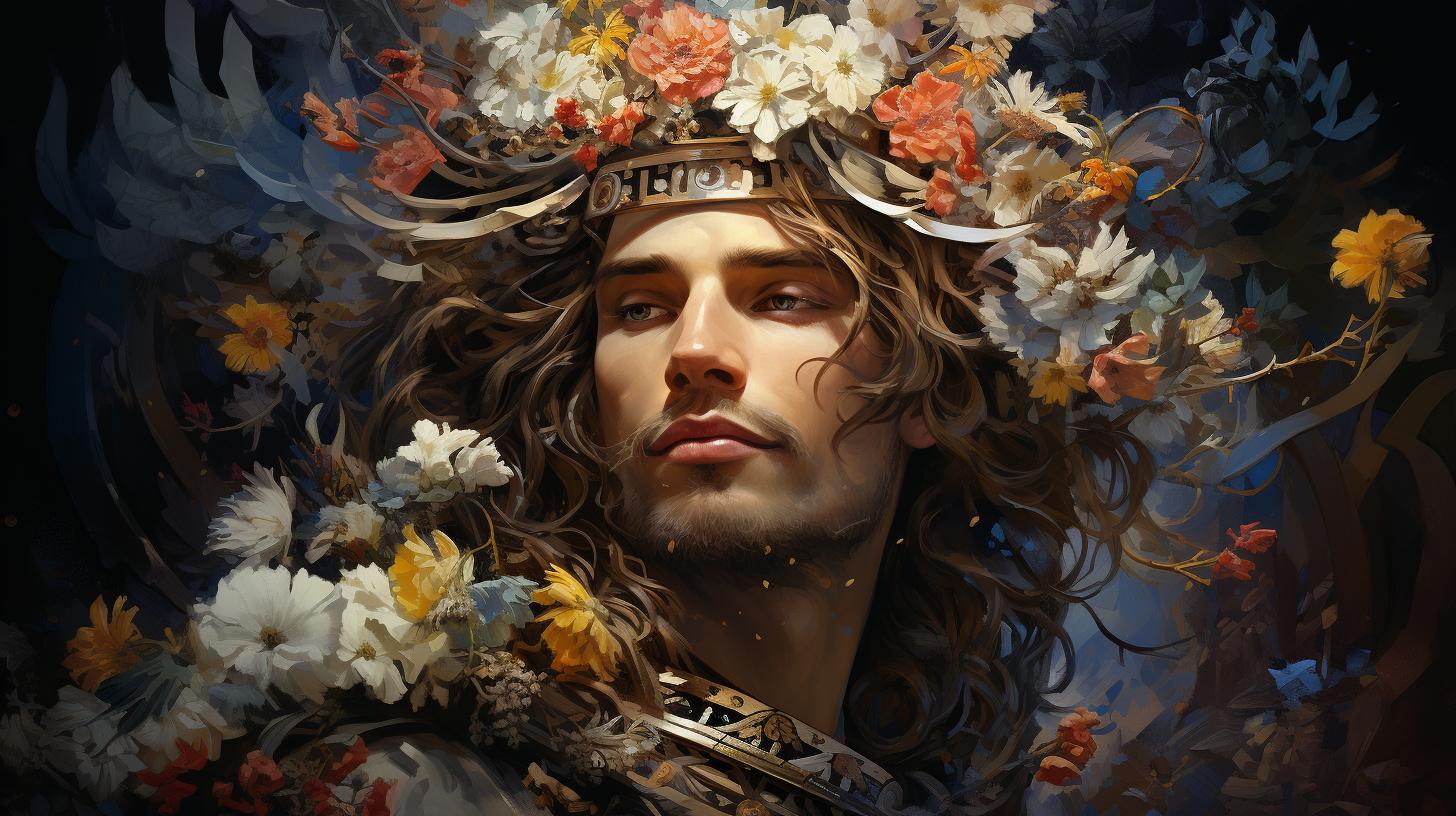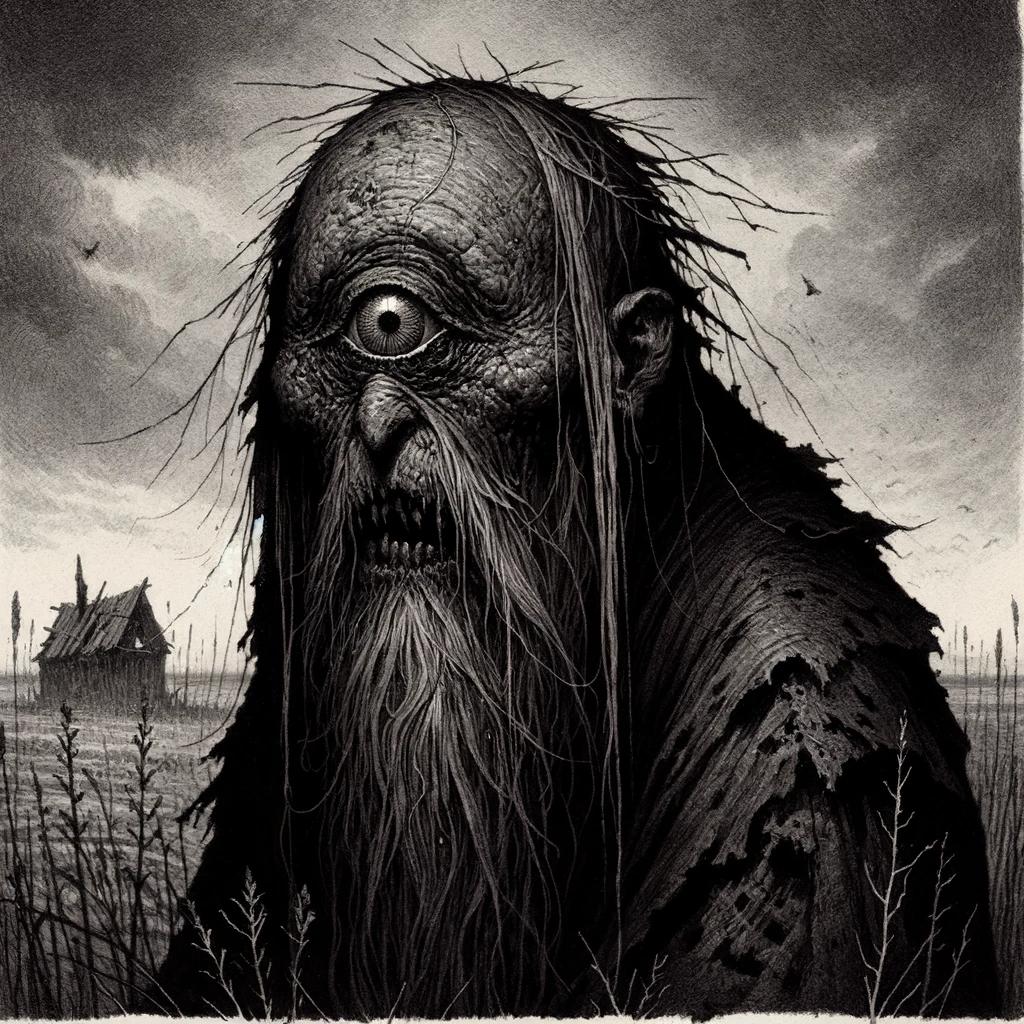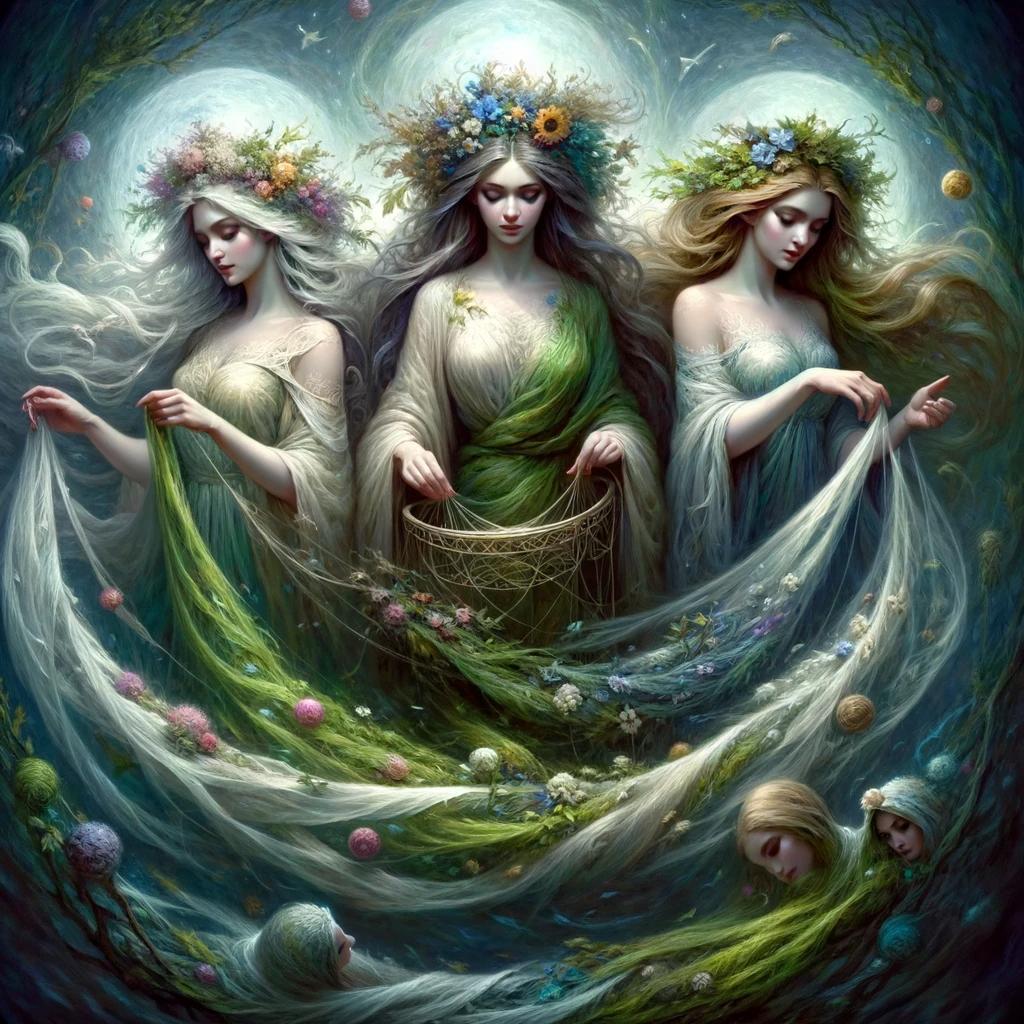Yarilo: Exploring the Slavic Deity of Spring, Fertility, and Vegetation

Yarilo, the sacred deity of spring and fertility, holds a significant place in Slavic mythology. Originating from the root *jarъ, meaning ‘spring’ or ‘summer’, Yarilo embodies youth, strength, and a fervent life force.
Celebrations and festivals dedicated to Yarilo were once widely observed in Russia, Belarus, Serbia, Croatia, and Slovenia. As a symbol of new life and abundance, Yarilo’s influence extends beyond mythology, connecting with themes of love, vegetation, and the changing seasons.
Explore the legends, symbolism, and historical significance surrounding this revered Slavic deity.
The Slavic Mythology and its Deities
Slavic mythology is a rich and diverse belief system that encompasses a wide range of gods, goddesses, and spirits. It reflects the religious practices and folklore of the Slavic people, who inhabited various regions of Eastern Europe.
The mythology of the Slavs offers intriguing insights into their understanding of the world, their rituals, and their cultural identity.
Overview of Slavic Mythology
Slavic mythology comprises a collection of narratives, rituals, and beliefs that were passed down orally from generation to generation. It served as a way for the Slavic people to make sense of the natural phenomena, cultural traditions, and social structures that shaped their lives.
The mythology often weaves together elements of nature, ancestry, and morality to create a complex tapestry of stories and symbols.
Key Deities in Slavic Mythology
The pantheon of Slavic deities was vast and diverse, with each deity representing different aspects of life, nature, and human experience. Some of the key deities in Slavic mythology include Perun, the god of thunder and lightning; Veles, the god of the underworld and earth; Svarog, the god of fire and blacksmithing; and Lada, the goddess of love, beauty, and fertility.
These gods and goddesses played pivotal roles in the Slavic cosmology and were revered and worshipped by the ancient Slavic people.
- Perun: The mighty god of thunder and the highest deity in the Slavic pantheon.
- Veles: The enigmatic god of the underworld, magic, and nature.
- Svarog: The divine blacksmith and master of fire, associated with creation and craftsmanship.
- Lada: The goddess of love, beauty, fertility, and harmony.
These deities and many others formed an interconnected web of divine forces that governed different aspects of life, providing guidance, protection, and sometimes even chaos.
They were worshipped through rituals, prayers, and offerings, ensuring the continuation of the natural order and human well-being.
Yarilo: The Sacred Deity of Spring and Fertility
Yarilo, a revered deity in Slavic mythology, is closely associated with the concepts of spring and fertility. This section explores the origins and meaning of Yarilo, as well as his significant role in Slavic mythology and society.
Origins and Meaning of Yarilo
The name Yarilo derives from the root *jarъ, signifying “spring” or “summer,” as well as qualities like “strong,” “furious,” and “full of youthful life.” Delving into the etymology of Yarilo offers insights into the symbolic significance attached to this deity.
Yarilo’s Role in Slavic Mythology and Society
Yarilo held immense importance in the pre-Christian Slavic religion, where he was worshipped as a sacred figure representing the rejuvenation and flourishing of nature. This subsection explores the various roles and functions attributed to Yarilo within the rich tapestry of Slavic mythology and society.
Festivals and Celebrations Dedicated to Yarilo
Discover the traditional festivals and celebratory rituals dedicated to Yarilo that were once observed in Russia, Belarus, Serbia, and other Slavic regions. These festivities provided an opportunity for communities to express reverence for Yarilo and celebrate the arrival of spring and the fertility it brings.
Connections between Yarilo and Other Slavic Deities
Within the intricate pantheon of Slavic deities, Yarilo shares connections and associations with other gods and goddesses. This subsection explores the intertwined relationships and symbolic links between Yarilo and prominent figures such as Perun, Veles, and more.
Symbolism and Associations of Yarilo
Yarilo, the sacred deity of Slavic mythology, is rich in symbolism and holds various associations within the ancient belief system. Exploring the symbolism and associations of Yarilo provides insights into the cultural significance of this deity and its role within Slavic traditions.
Yarilo as a Symbol of Spring and New Life
Yarilo is closely associated with the arrival of spring and the awakening of new life. As a symbol of rebirth and renewal, Yarilo embodies the transformative power of nature and the cycle of seasons.
The deity’s emergence coincides with the blossoming of plants, the return of migratory birds, and the rejuvenation of the earth. Yarilo’s presence during this period represents the eternal cycle of life, offering hope and optimism for the future.
Yarilo’s Connection to Vegetation and Fertility
Yarilo holds a strong connection to vegetation and fertility. The deity is often depicted carrying a sheaf of grain or flowers, symbolizing abundance and the bountiful harvest. Yarilo’s association with fertility extends beyond the natural world to encompass human fertility as well.
The deity is often invoked during rites and rituals aimed at promoting fertility, ensuring successful pregnancies, and ensuring a prosperous future for families and communities.
Yarilo’s Role in Love and Relationships
Yarilo’s influence expands to matters of love and relationships.
As a deity of passion and desire, Yarilo’s presence is believed to inspire intense emotions, especially romantic love. In ceremonies dedicated to Yarilo, couples seek the deity’s blessings for a harmonious and fulfilling love life.
Yarilo is also invoked to heal broken heart, foster love between partners, and strengthen the bonds of existing relationships.
The Legends and Myths of Yarilo
Yarilo, the sacred deity of spring and fertility, is steeped in rich folklore and mythical narratives. These legends and myths have been passed down through generations, offering glimpses into the ancient beliefs and traditions associated with Yarilo.
Exploring these stories unveils the multifaceted nature of this revered Slavic deity.
Folklore Accounts of Yarilo
Folklore accounts depict Yarilo as a vibrant and energetic deity, embodying the youthful vigor and life force of the spring season. These tales often highlight Yarilo’s connection with the natural world and emphasize the deity’s role in promoting growth, abundance, and renewal.
From tales of Yarilo’s interactions with mortals to encounters with other mythical beings, these folklore accounts bring Yarilo to life in the realm of storytelling.
Yarilo in Slavic Folk Songs and Oral Traditions
Slavic folk songs and oral traditions have served as essential conduits for preserving the stories and songs dedicated to Yarilo.
These cultural expressions offer a melodic and poetic glimpse into the beliefs and rituals associated with the deity. Through the verses of these songs and the retelling of stories across generations, Yarilo’s significance is perpetuated and celebrated, connecting communities to their ancestral roots.
Yarilo’s Journey in the Slavic Mythological Narrative
Within the broader Slavic mythological narrative, Yarilo’s journey unfolds as a pivotal tale of transformation and cyclical renewal. This mythic storyline often encompasses themes of love, fertility, and the eternal cycle of life, death, and rebirth.
Yarilo’s path and encounters with other deities contribute to the intricate tapestry of Slavic mythology, elevating the deity’s stature and exemplifying the interconnections within the pantheon.
Interactions with Other Deities in Slavic Mythology
Yarilo, the sacred deity of spring and fertility, played significant roles in the complex pantheon of Slavic mythology.
This section explores Yarilo’s relationships with other prominent gods and their interactions within the Slavic mythological framework.
Yarilo’s Relationship with Perun, Veles, and Other Gods
Yarilo’s association with Perun, the god of thunder and lightning, illustrates the intertwined nature of their domains. As the god of fertility, Yarilo was believed to bring life and growth to the land, complementing Perun’s role as the protector and provider of rain and storms necessary for agriculture.
On the other hand, Yarilo’s interactions with Veles, the god of the underworld and animals, showcased the duality of life and death. Yarilo’s connections to the cycle of seasons and vegetation aligned with Veles’ domain over the mysterious depths of the earth, where seeds lay dormant during the winter months.
Yarilo’s relationships extended beyond Perun and Veles, as he played a role in various legends involving other gods. He was often depicted as an ally to the goddesses associated with love, beauty, and fertility, such as Lada and Mokosh.
Yarilo in the Pantheon of Slavic Deities
Within the pantheon of Slavic deities, Yarilo held a prominent position due to his domains of spring, fertility, and vegetation.
He was revered as a youthful and vibrant god, embodying the vitality and energy of the changing seasons.
Yarilo’s presence in the pantheon influenced and shaped the belief system of the Slavic people.
The interconnectedness of his roles with other gods solidified his importance and the multifaceted nature of his symbolism.
While Yarilo’s exact position in the hierarchy of gods may vary in different Slavic regions, his recurring presence and associations with various key figures emphasize his central role as a deity revered across different communities.
- Yarilo’s relationships with Perun, Veles, and other gods showcase his role in the Slavic mythological framework.
- As a deity of fertility, Yarilo’s association with Perun, the god of thunder and lightning, reflects their complementary domains of nature.
- Yarilo’s interactions with Veles, the god of the underworld, illustrate the interconnectedness of life, death, and cyclical nature.
- Beyond Perun and Veles, Yarilo is entwined with other goddesses associated with love, beauty, and fertility.
- In the pantheon, Yarilo’s significance is solidified through his position and influence across Slavic regions.
- His vibrant and youthful symbolism embodies the energy and vitality of the changing seasons.
Historical and Cultural Significance of Yarilo
The historical and cultural significance of Yarilo encompasses various aspects, including its role in pre-Christian Slavic religion, its influence on Russian and Slavic culture, and its resurgence in modern folklore and art.
Yarilo in Pre-Christian Slavic Religion
In pre-Christian Slavic religion, Yarilo held a prominent position as a deity associated with spring, fertility, and the cycles of life. He was revered as the symbol of youthful vitality, and his worship played a crucial role in agricultural rituals and fertility rites.
Devotees believed that by propitiating Yarilo, they could ensure prosperous harvests and abundant livestock.
Yarilo’s Influence on Russian and Slavic Culture
Throughout history, Yarilo has left an indelible mark on Russian and Slavic culture. His depiction in folklore, songs, and poems showcases the enduring influence of this deity. Yarilo’s association with spring and new life has inspired numerous artistic and literary works, symbolizing the cyclical nature of the seasons and the perpetual cycle of birth, death, and rebirth.
Yarilo’s Resurgence in Modern Folklore and Art
Despite the Christianization of Slavic lands, Yarilo has experienced a resurgence in modern folklore and art. Many contemporary artists, musicians, and writers draw inspiration from Yarilo’s mythological significance, incorporating his imagery and symbolism into their creations.
This revival serves as a testament to the enduring fascination and cultural relevance of Yarilo in today’s society.
The Continuity of Yarilo’s Worship and Beliefs
The worship and beliefs surrounding Yarilo, the deity of spring and fertility in Slavic mythology, have continued to persist through the centuries. Despite the influence of Christianization, surviving traditions and rituals associated with Yarilo have managed to endure, carrying on the legacy of this ancient deity.
Surviving Traditions and Rituals Associated with Yarilo
Various customs and practices that stem from the worship of Yarilo have survived to this day. These include festivals, processions, and ceremonies that celebrate the arrival of spring and the power of fertility.
The rituals often involve offerings to Yarilo, such as flowers, fruits, and symbolic representations of new life. Participants partake in dances and songs to honor the deity and invoke his blessings for a prosperous and fruitful season.
Yarilo’s Relevance in Contemporary Slavic Paganism
The revival of Slavic paganism in contemporary times has brought renewed interest in Yarilo. Modern practitioners of Slavic Paganism, also known as Rodnovery, view Yarilo as an important figure in their spiritual practices.
They seek to connect with the natural cycles of life, drawing inspiration from Yarilo’s association with the changing seasons and the vitality of nature. Yarilo represents a connection to ancestral traditions and serves as a symbol of identity and cultural heritage for those embracing Slavic Paganism.
The Impact of Christianization on Yarilo Worship
With the spread of Christianity in the Slavic regions, the worship of Yarilo underwent significant changes. Some aspects of Yarilo’s beliefs and practices were absorbed into Christian traditions, adapting to the new religious framework.
Yarilo became associated with Christian saints, such as Saint George, and his festivals merged with Christian celebrations. However, despite the influence of Christianization, elements of Yarilo’s worship still managed to survive, demonstrating the resilience of ancient beliefs and their coexistence with newer religious practices.
Yarilo, the sacred deity of spring and fertility in Slavic mythology, plays a significant role as a representation of life, death, and rebirth. This theme reflects the cyclical nature of existence and the ever-changing seasons.
Yarilo’s symbolism encompasses the interconnectedness of these fundamental aspects of human existence.
Yarilo’s Symbolic Connection to Nature and the Changing Seasons
Yarilo’s symbolic connection to nature is closely tied to the changing seasons. As the deity associated with spring, Yarilo represents the renewal and rebirth of life after the harshness of winter.
The blossoming of flowers, the sprouting of vegetation, and the return of vibrant colors to the landscapes all embody the essence of Yarilo’s influence.
The mythology surrounding Yarilo emphasizes the cyclical pattern of life, as his presence brings the promise of fertility and abundance.
This symbolic connection to the changing seasons serves as a reminder of the eternal cycle of life, death, and rebirth in the natural world.
Yarilo’s Role in Human Existence
In addition to its symbolic connection to nature, Yarilo’s role as a representation of life, death, and rebirth extends to the realm of human existence. Yarilo embodies the vitality and energy of youth, as well as the passionate and fierce aspects of life.
Yarilo’s influence on human relationships, particularly in matters of love and fertility, highlights its significance in the cycles of human life. The deity’s association with spring evokes feelings of attraction, desire, and the invigorating power of new beginnings.
Furthermore, Yarilo’s symbolism encompasses the transformative journey from birth to death and subsequent rebirth, both in the physical and spiritual realms. It signifies the perpetual cycle of growth, change, and renewal that underlies human existence.
- Yarilo’s symbolic connection to nature reflects the changing seasons and the cyclical nature of life.
- Yarilo’s representation of life, death, and rebirth holds significance in the eternal cycle of existence.
- Yarilo’s role in human existence encompasses the vitality of youth, passion, and the transformative journey of life.
.




















